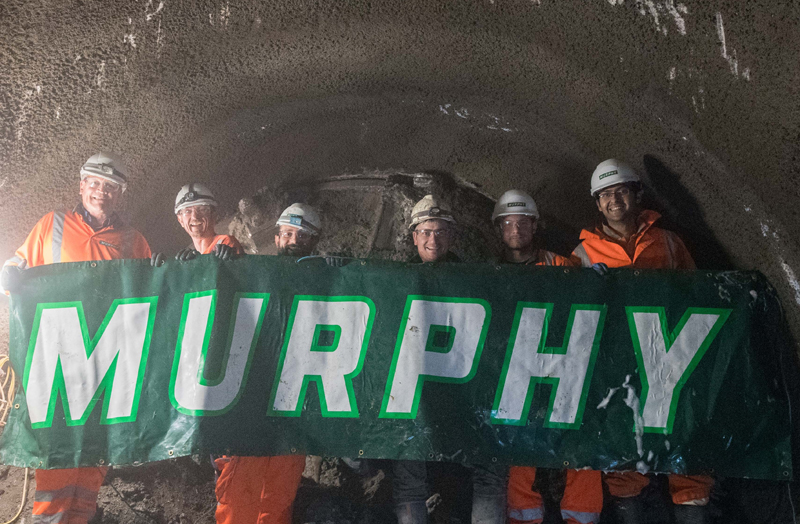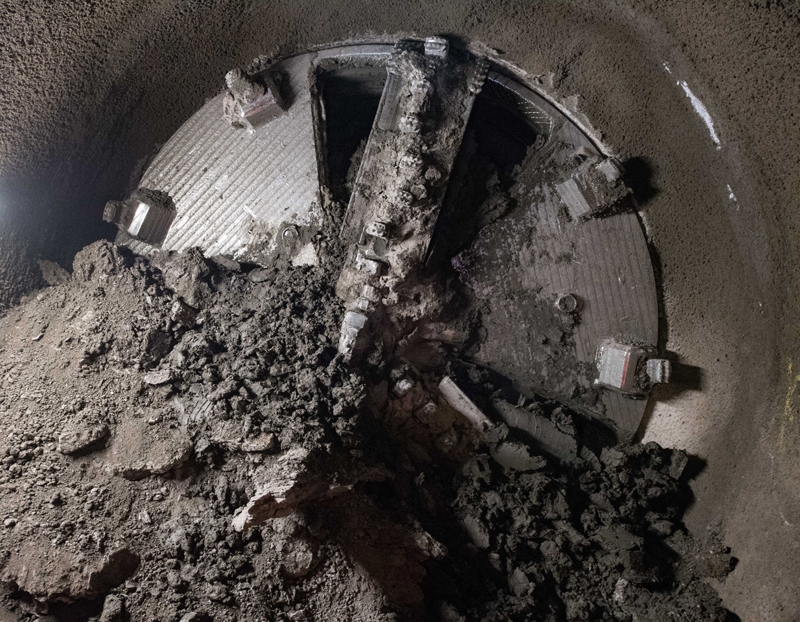Breakthrough on UKPN tunnel
1 July 2016Great Britain – A 3km UK Power Networks (UKPN) tunnel has broken through in Tower Hamlets, east London. J. Murphy & Sons excavated the GBP 27M (USD 36M) 2.85m-diameter tunnel at a depth of 23-30m.
Geology along the alignment was the full range for London from heavy London Blue Clay, Lambeth Group, Thanet Sands and into the chalk, containing flints at the deepest levels.
A spokesperson for Murphy said: "Murphy broke through to the final tunnel reception chamber in Tower Hamlets in east London, right on target - having allowed for a variance of just 50 millimetres from the start of the tunnel in Southwark, south-east London. The Murphy team selected the company-owned Lovat tunnel boring machine Fionnuala, a 91-tonne machine built to Murphy's specifications. Fionnuala's components were first lowered into the tunnel chamber in south-east London in August 2014 in three main sections, taking two weeks to build below ground and has since progressed at a highly impressive rate of 23 metres per day, with up to 3bar external water pressure."
The tunnel connects substations north and south of the River Thames to meet London's demand for electricity. By choosing to tunnel from one substation to the other, Londoners avoided months of disruptive roadworks for cable installation, upgrades or repairs.
The Murphy team will now spend two weeks taking Fionnuala apart onto 70m of back-up sledges, guiding all the equipment through a custom-sized junction chamber in Tower Hamlets before lifting her out of a shaft using a 350 tonne mobile crane.
The tunnel will now be lined with hundreds of cable support brackets to carry 132,000 volt electricity cables, connecting substations between south-east London, the City and east London. Work to fit out the new tunnel will start in July and last seven months. The new cables are due to go live next summer.
Project Facts:
- The work involved over 290,000 man hours - all achieved without any lost injury time, a result of the Murphy safety culture development programme and "Never Harm" ethos
- 2,965m tunnel comprises of 17,790 individual segment linings weighing 750kg
- Over 77,000 tonnes of excavated material have been transported from site
- 99.7 % of surplus material removed from site has been recycled
- Over 2,600 tonnes of cementicous grout have been injected behind tunnel linings
- Crossed under 'live' operational Jubilee lines with no settlement, plus crossed under the Thames
- Carried out three 'free-air' tunnel boring machine interventions to inspect the cutter-head, a process that takes 4 days and nights, replacing the teeth and picks to work at maximum efficiency


